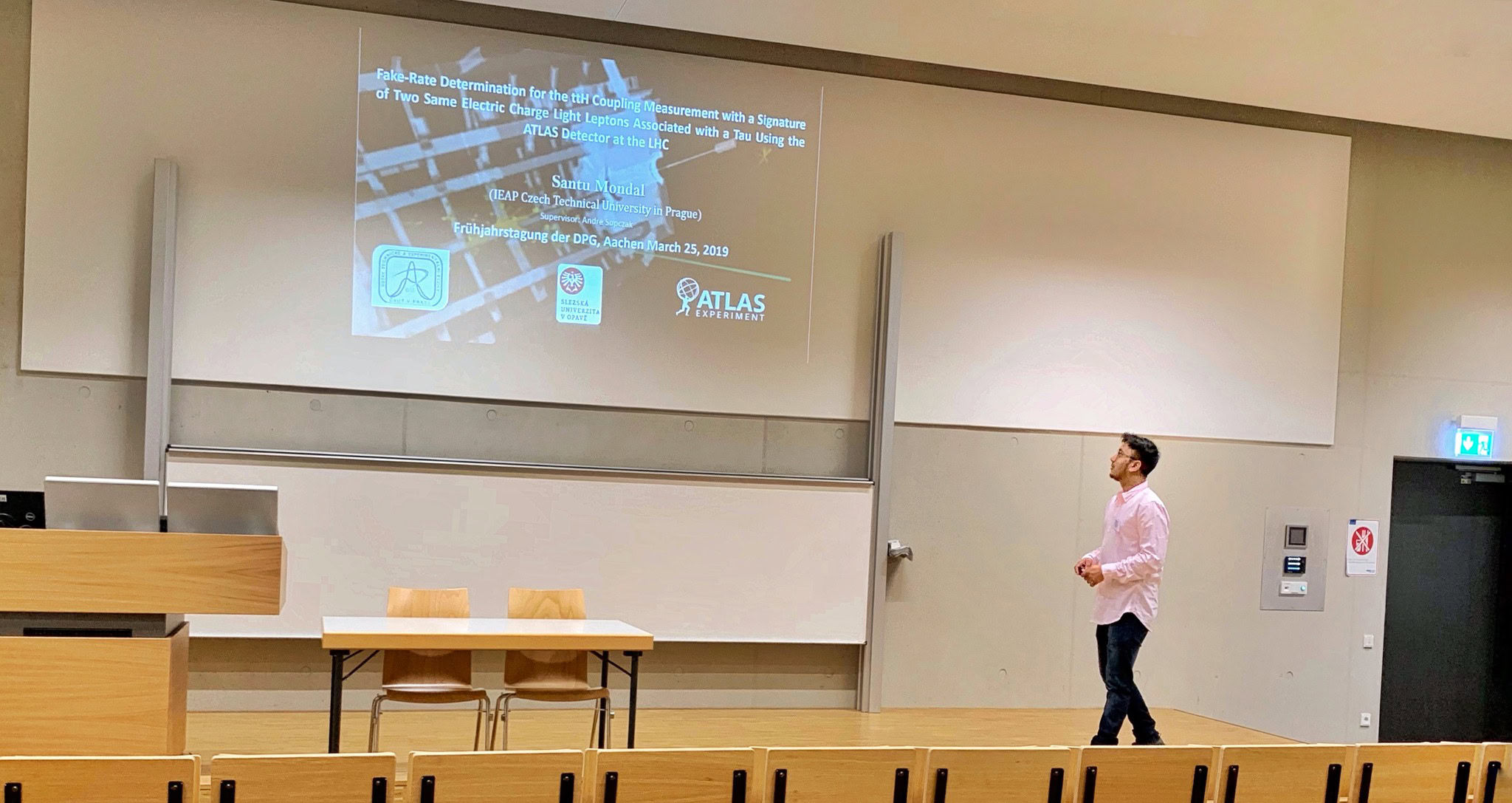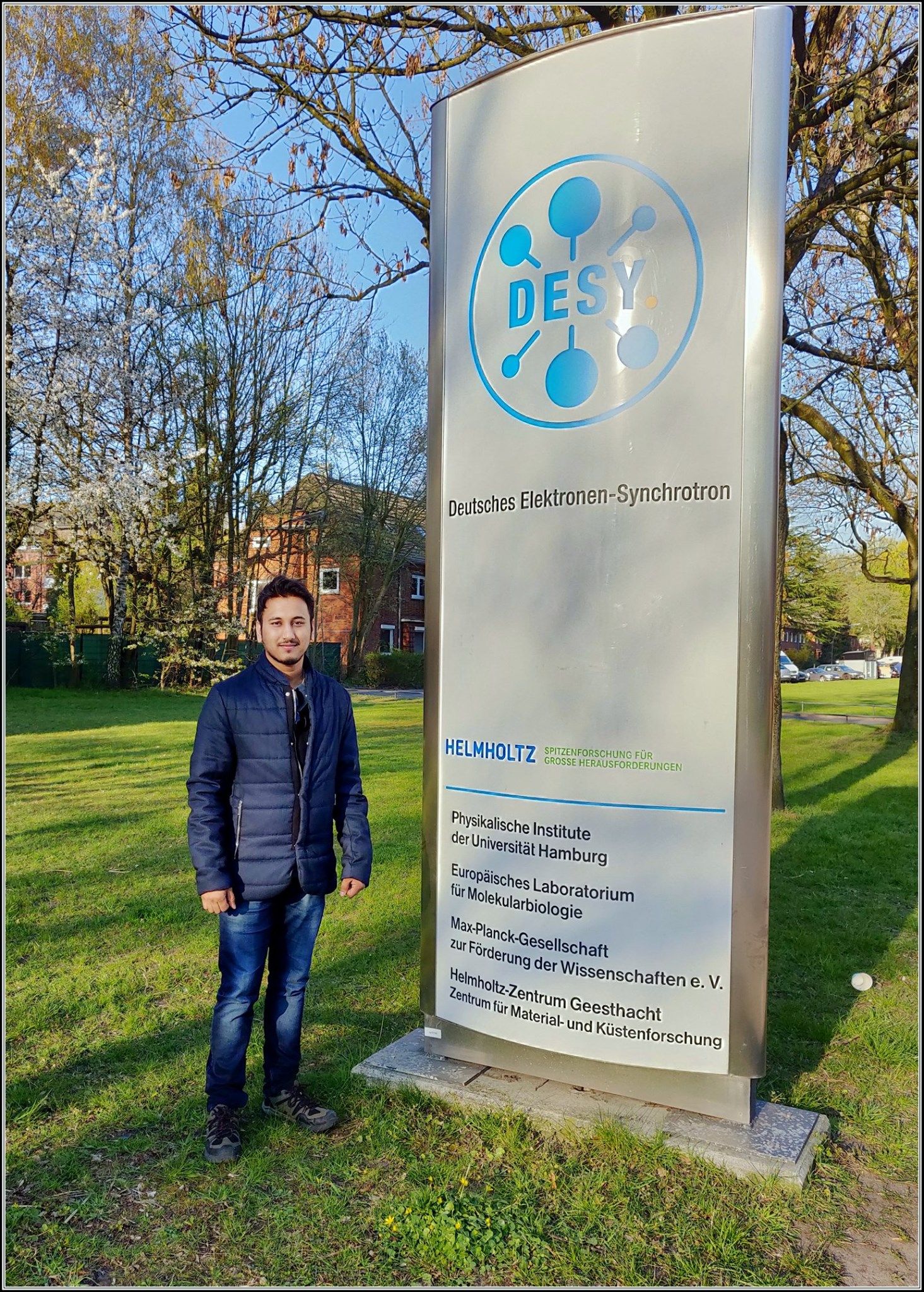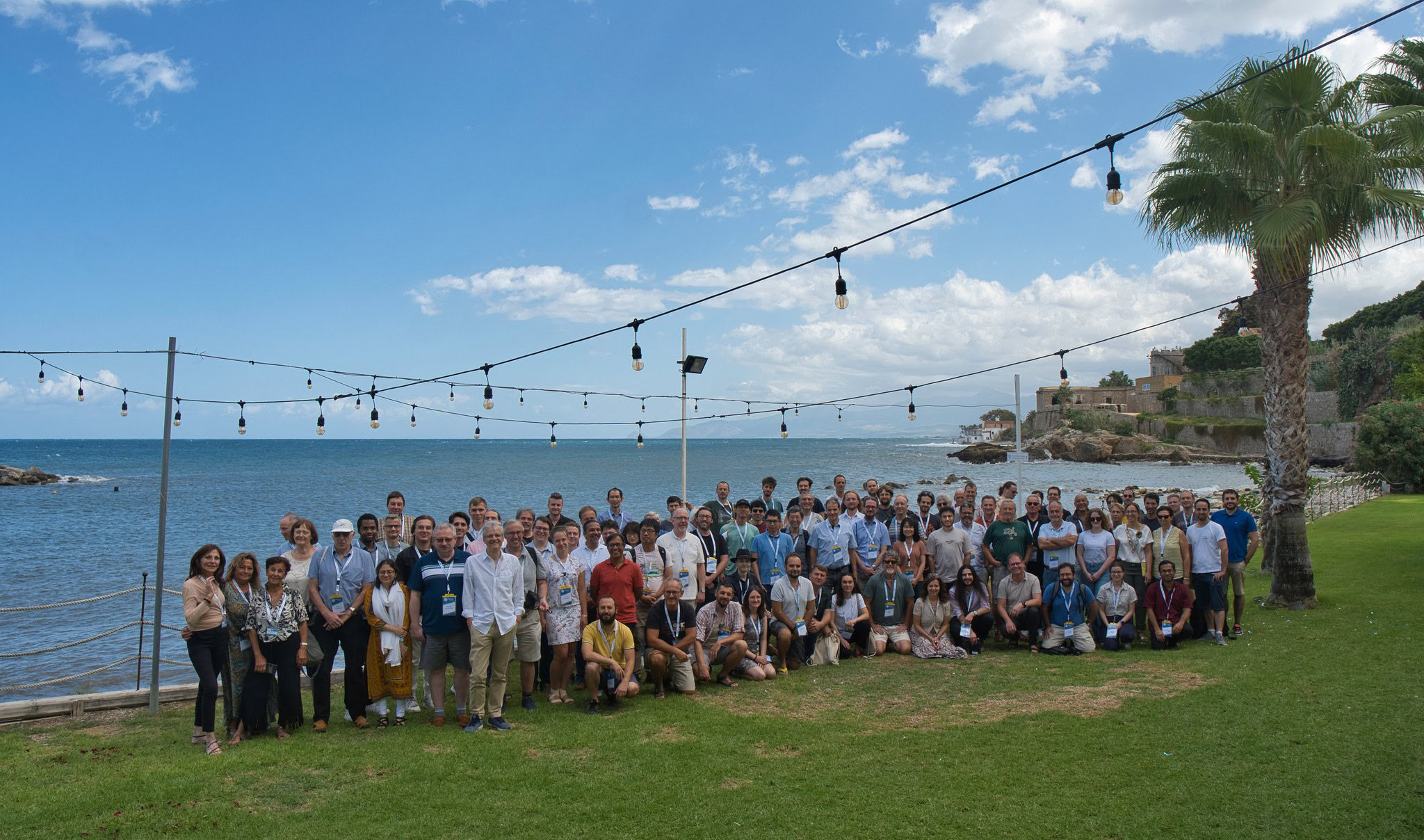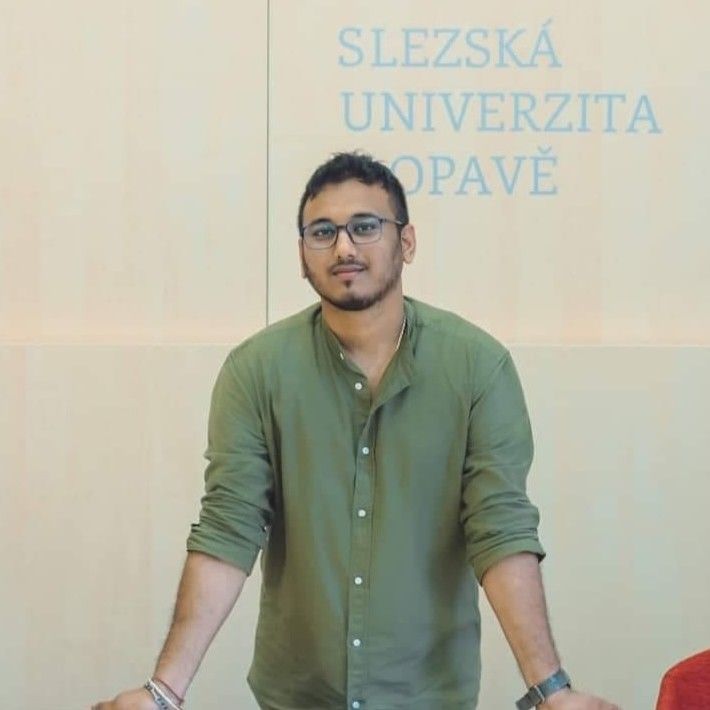Particle Physics - LHC - ATLAS
I am a physicist at CERN, the European Organisation for Nuclear Research, and a postdoctoral fellow at Charles University, Faculty of Mathematics and Physics, working at the Large Hadron Collider (LHC) with the ATLAS experiment.
Education
- Ph.D. in Experimental High-Energy Physics
-
Silesian University in Opava &
Czech Technical University in Prague, CZ - Master’s Degree in Physics
- Indian Institute of Technology Bombay (IITB), IN
- Bachelor’s Degree in Physics
- Burdwan University, IN
Research Interests
![]() Jet Substructure Analysis
Jet Substructure Analysis
![]() Top-Quark Physics
Top-Quark Physics
![]() Flavour Tagging Calibration
Flavour Tagging Calibration
![]() Heavy-Ion Collisions
Heavy-Ion Collisions
![]() Precision Measurements
Precision Measurements
Science Communication
Featured as the lead analyst in two exclusive outreach videos produced by CERN, highlighting the top quark observations in heavy-ion collisions.
Science Communication
Featured as the lead analyst in two exclusive outreach videos produced by CERN, highlighting the top quark observations in heavy-ion collisions.
On Top of Heavy Ions | ATLAS Results Explained
Produced an outreach video to promote ATLAS's results on top-quark production in heavy-ion collisions, aimed at a broader audience.
ATLAS observes top quarks in lead-lead collisions
Produced an outreach video to promote ATLAS's results on top-quark production in heavy-ion collisions, aimed at a broader audience.
Research Employment

Post‑Doctoral Research Associate
Charles University, Faculty of Mathematics and Physics
September 2025 – Now · Prague (CZ)
I conduct research within the ATLAS Collaboration focused on two distinct areas. The first involves studies of jet properties and substructure in both proton-proton ($pp$) and heavy-ion (\(\mathrm{Pb}+\mathrm{Pb}\), \(\mathrm{O}+\mathrm{O}\), etc.) collisions, working to improve jet calibration and develop advanced analysis techniques to better characterise jet phenomena across different collision systems. In parallel, I investigate top-quark production in heavy-ion (\(\mathrm{Pb}+\mathrm{Pb}\)) collisions, aiming to deepen the understanding of top-quark behaviour and interactions in the quark-gluon plasma environment.
Other responsibilities included:
- Performing p1 muon detector shift duties as part of ATLAS online operations
- Supervising Ph.D. and M.Sc. students, providing guidance on data analysis and research projects
- Contributing to ATLAS software validation efforts, particularly b-tagging performance under heavy-ion conditions
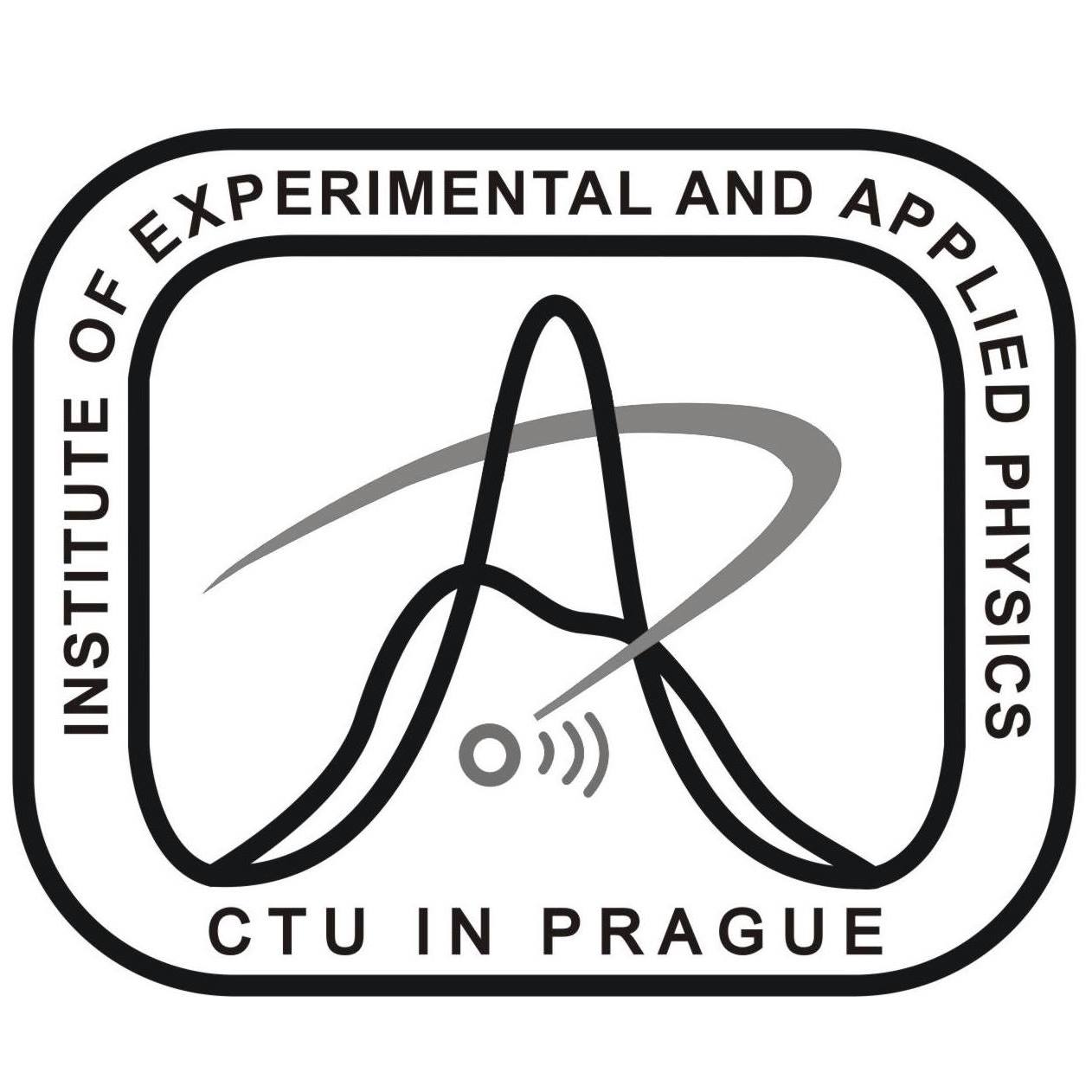
Post‑Doctoral Research Associate
Czech Technical University in Prague
October 2024 – September 2025 · Prague (CZ)
The top quark, the heaviest known elementary particle, provides a unique probe of the initial state in heavy-ion collisions. In \(\mathrm{Pb}+\mathrm{Pb}\) collisions at the LHC, top quarks decay before the quark–gluon plasma forms, offering an unmodified view of high-energy QCD dynamics. In Phys. Rev. Lett. 134, 142301 (2025), we reported the first 5.0σ observation of top–antitop production in heavy-ion collisions. Key contributions included optimising signal regions, implementing a profile-likelihood multi-fit strategy across various models, and maximising sensitivity in the dilepton final state with high-purity $t\bar{t}$ reconstruction. I leveraged cross-collision expertise from $pp$, $p+\mathrm{Pb}$, and \(\mathrm{Pb}+\mathrm{Pb}\) datasets to refine selection and systematics, ensuring analysis reproducibility through HEPData submissions and promoting transparency and reusability for the global theory community.
Other responsibilities included:
- Contributed to ATLAS software validation efforts, focusing on $b$-tagging performance in high-occupancy environments
- Acted as the ATLAS bJet/ID/MinBias signatures expert-on-call and online coordinator during active data-taking periods
- Initiated Run 3 heavy-ion analysis efforts on \(\mathrm{Pb}+\mathrm{Pb}\) collisions, including early event selection and workflow development
- Led and participated in outreach activities, including public talks, student workshops, and science communication campaigns
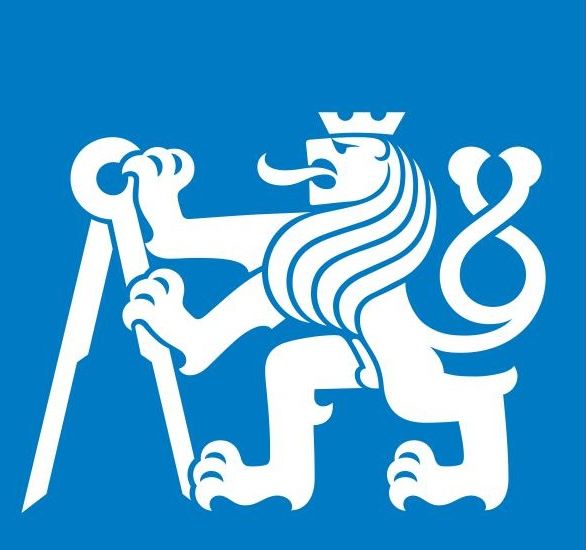
Doctoral Researcher
Silesian University in Opava & Czech Technical University in Prague
September 2017 – October 2024 · Prague (CZ)
I completed my Ph.D. as part of the ATLAS Collaboration, focusing on Higgs boson measurements in proton-proton collisions, specifically the $t\bar{t}W$ production channel with multilepton final states, and on top-quark studies in proton-lead ($p+\mathrm{Pb}$) and high-multiplicity proton-proton ($pp$) collisions. My research covered the full data analysis pipeline—from developing statistical and simulation frameworks to presenting results at international conferences and publishing in peer-reviewed journals.
Key contributions during my doctoral research include:
Top-Quark Pair Production in $p+\mathrm{Pb}$ Collisions
Led the first observation of top-quark pair production in a heavy-ion environment at $\sqrt{s_{NN}} = 8.16\ \mathrm{TeV}$ with significance exceeding $5\sigma$. The cross-section was measured with a relative uncertainty of $9\%$, making this the most precise $t\bar{t}$ cross-section determination in nuclear collisions to date. I designed the profile-likelihood framework, managed systematic uncertainties, optimised fit variables, and contributed to pseudo-top reconstruction. This framework was subsequently adapted for \(\mathrm{Pb}+\mathrm{Pb}\) analyses. Results were presented at ICHEP 2024 and Diffraction & Low-x 2024, and published in
JHEP 11 (2024) 101.
$t\bar{t}H$ and $t\bar{t}W$ Production in Multilepton Final States
Contributed to measurements using $80\ \mathrm{fb}^{-1}$ of proton-proton collision data at $\sqrt{s_{NN}} = 13\ \mathrm{TeV}$, focusing on the same-sign dilepton plus hadronic tau ($\tau$) channel. Led data-driven background estimation employing a fake-factor (ABCD) method, optimised multivariate discriminants, and supported framework and Monte Carlo (MC) production development. Results were presented at ICHEP 2020.
Flavour-Tagging Calibration for LHC Run 2
Developed and maintained pseudo‑continuous b‑tagging calibration tools using \(139\ \mathrm{fb}^{-1}\) of proton‑proton collision data at $\sqrt{s_{NN}} = 13\ \mathrm{TeV}$. Built validation and visualisation utilities based on CDI files, enhancing consistency across ATLAS releases and analysis readiness. The results published in
Eur. Phys. J. C 83, 681 (2023).
Key Physics Analyses

Observation of top‑quark pair production in lead‑lead collisions
This ATLAS analysis achieved the first observation of top-quark pair (tt̄) production in \(\mathrm{Pb}+\mathrm{Pb}\) collisions, using 1.9 nb⁻¹ of Run-2 data. Top quarks, decaying before QGP formation, serve as unique probes of initial-state dynamics and high-Q² nPDFs. The analysis focused on the dilepton final state. A 5.0σ discovery-level significance was achieved, with a cross-section of 3.6 μb and 31% total uncertainty, in agreement with nPDF-based predictions. Applicant optimised the signal region, implemented the profile-likelihood multi-fit analysis, extracted the signal strength for the cross-section measurement, and integrated theoretical inputs into the analysis. This result establishes the foundation for precision top-quark measurements in heavy-ion collisions. The results were featured on Phys.org, Nature.com, and IOP Physics World. Published as a Phys. Rev. Lett. 134, 142301 (2025) Editors’ Suggestion.
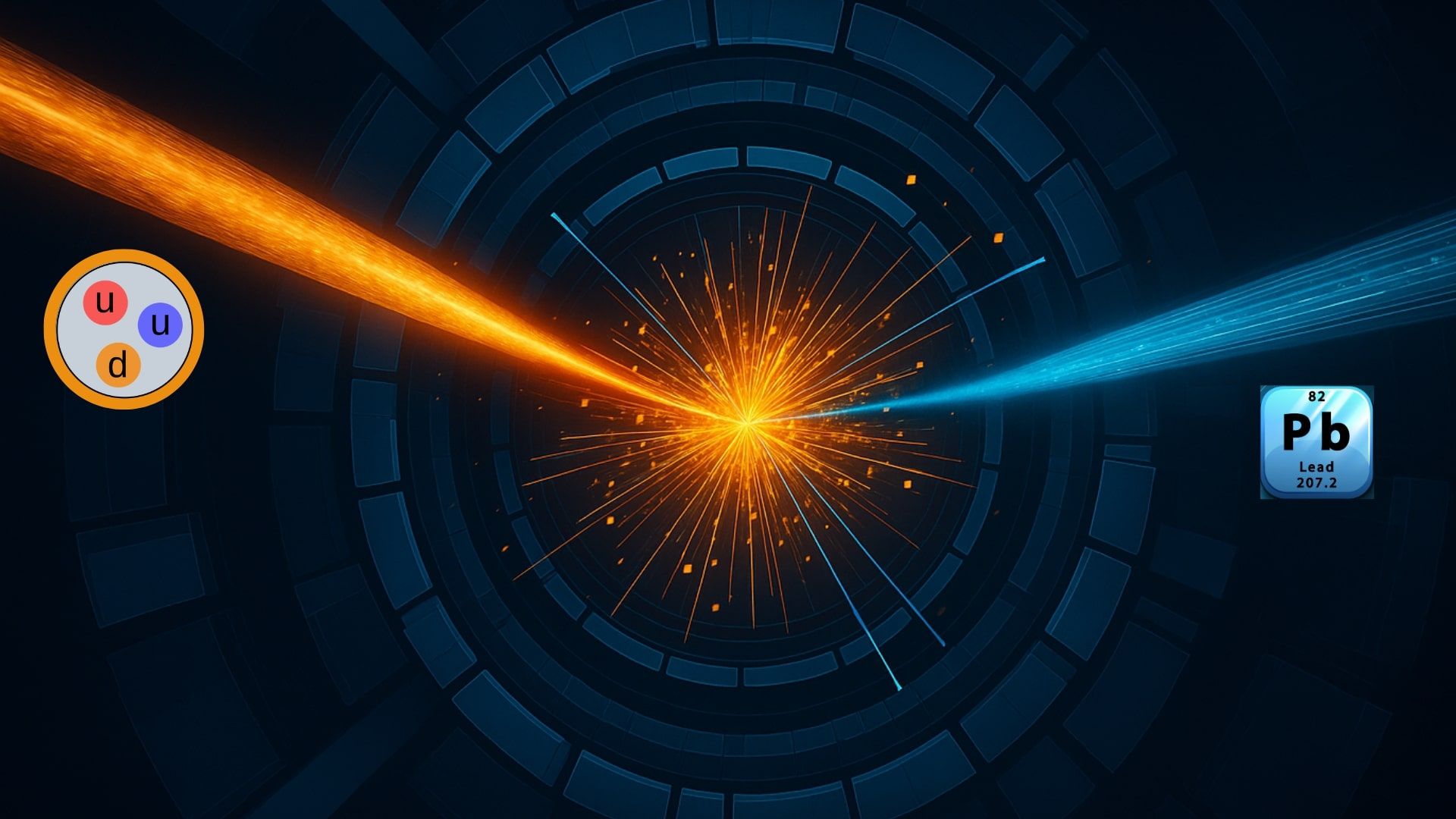
Observation of top quark pair production in $p+\mathrm{Pb}$ collisions
This ATLAS analysis achieved the first observation of top-quark pair ($t\bar{t}$) production in $p+\mathrm{Pb}$ collisions at \( \sqrt{s} = 8.16~\mathrm{TeV} \), reaching >5σ significance and 9% cross-section uncertainty—the most precise result in a heavy-ion environment. Top quarks, decaying before QGP formation, serve as clean probes of initial-state nPDFs, particularly high-\( Q^2 \) gluons. Results were presented at ICHEP 2024 and Diffraction & Low-x 2024 and published in JHEP 11 (2024) 101.

Analysis of $t\bar{t}H$ and $t\bar{t}W$ production in multilepton final states with the ATLAS detector
This ATLAS analysis measured \( t\bar{t}H \) and \( t\bar{t}W \) production in multilepton final states, focusing on the two same-sign leptons plus one hadronic tau channel, using 80~fb\(^{-1} \) of 13~TeV $pp$ data. It provided direct sensitivity to the top-Higgs Yukawa coupling and probed \( t\bar{t}W \) backgrounds in high-object-multiplicity final states. I optimised multivariate discriminants to isolate the \( t\bar{t}H \) signal from major SM backgrounds (\( t\bar{t}W \), \( VV \), non-prompt leptons) and led the lepton background estimation using a data-driven fake-factor (ABCD) method, improving modelling accuracy. I also contributed to simulation production and framework development to enhance analysis efficiency. Results were presented at ICHEP 2020.

ATLAS Flavour tagging: jet collection calibration and CDI tooling
I developed and maintained the pseudo-continuous calibration framework for flavour tagging and $b$-jet identification in ATLAS simulations and data. Using the full Run 2 dataset (139~fb\(^{-1}\) at \( \sqrt{s} = 13~\mathrm{TeV} \)), I established a robust methodology for extracting b-tagging efficiency and c-/light-jet misidentification rates directly from data. To support validation and integration workflows, I created tools to visualise calibrations directly from CDI files, enabling fast cross-release comparisons and reducing redundancy. These tools streamlined the calibration pipeline and have been adopted across multiple ATLAS analyses requiring precise flavour tagging performance. This work has been published in Eur. Phys. J. C 83, 681 (2023).
Briefings
The first observation of top quarks in heavy-ion collisions—an achievement formally recognised by CERN’s exclusive Physics Briefings for its significant impact.
Research in the News
Academic Achievements
2024
RNDr. DEGREE
Completed a two-year academic Master’s programme in Theoretical Physics at the Institute of Physics, Silesian University in Opava, leading to the RNDr. degree.
More Details2024
CERN SCHOLARSHIP
Fully funded participation in ESHEP 2024, hosted in Peebles, Scotland, UK, awarded by CERN.
More Details2018 – 19
EXTRAORDINARY SCHOLARSHIP
Awarded for academic excellence and research contributions by Silesian University in Opava.
More Details2017 – Now
PUBLICATIONS REVIEWER
Reviewed ATLAS–CERN publications on behalf of:
– Charles University (2025– )
– The Czech Technical University in Prague (2017–25 )
Conference Talks
Plenary Talks
Recent ATLAS results relevant for PDFs at low and high x, saturation in both $pp$ and HI collisions
Event: Diffraction and Low-x — Sicily, Italy
Top production in Heavy Ion (\(\mathrm{Pb}+\mathrm{Pb}\) and $p+\mathrm{Pb}$) collisions
Event: ATLAS Week, 30th birthday — University of Lisbon, Lisbon, Portugal
Invited Talks
Towards the observation of top‑quark pair production in proton‑lead collisions at 8.16 TeV
Event: CZ+SK HEP Workshop — Palacký University in Olomouc, Czech Republic
Towards the observation of top‑quark pair production in proton‑lead collisions at 8.16 TeV
Event: CZ+SK HEP Workshop — Comenius University, Bratislava, Slovakia
TRExFitter: A framework for binned template profile likelihood fits in ATLAS
Event: New Vistas in Photon Physics in Heavy-Ion Collisions — Polish Academy of Sciences, AGH University of Science and Technology, Kraków, Poland
Towards the observation of top‑quark pair production in proton‑lead collisions at 8.16 TeV
Event: ATLAS top workshop — Instituto de Física Corpuscular (IFIC), Valencia, Spain
Observation of top-quark pair production in proton-lead collisions in ATLAS detector
Event: Nuclear & Plasma Sciences Society — CTU in Prague, Czech Republic
Fake‑Rate Determination for the $t\bar tH$ Coupling Measurement with a Signature of Two Same Electric Charge Light Leptons Associated with a Tau Using the ATLAS Detector at the LHC
Event: DPG Conference Aachen — RWTH Aachen University, Aachen, Germany
Posters
Observation of top‑quark pair production in $p+\mathrm{Pb}$ collisions in the ATLAS experiment
Event: 42th International Conference on High Energy Physics (ICHEP) — Prague, Czech Republic
Fake‑Rate determination for the $t\bar tH$ coupling measurement with a signature of two same electric charge light leptons associated with a tau using the ATLAS detector at the LHC
Event: 40th International Conference on High Energy Physics (ICHEP) — Virtual
Featured Publications
Published: 7 April 2025 · Physical Review Letters (PRL) , Editor's Suggestion, Featured in Physics
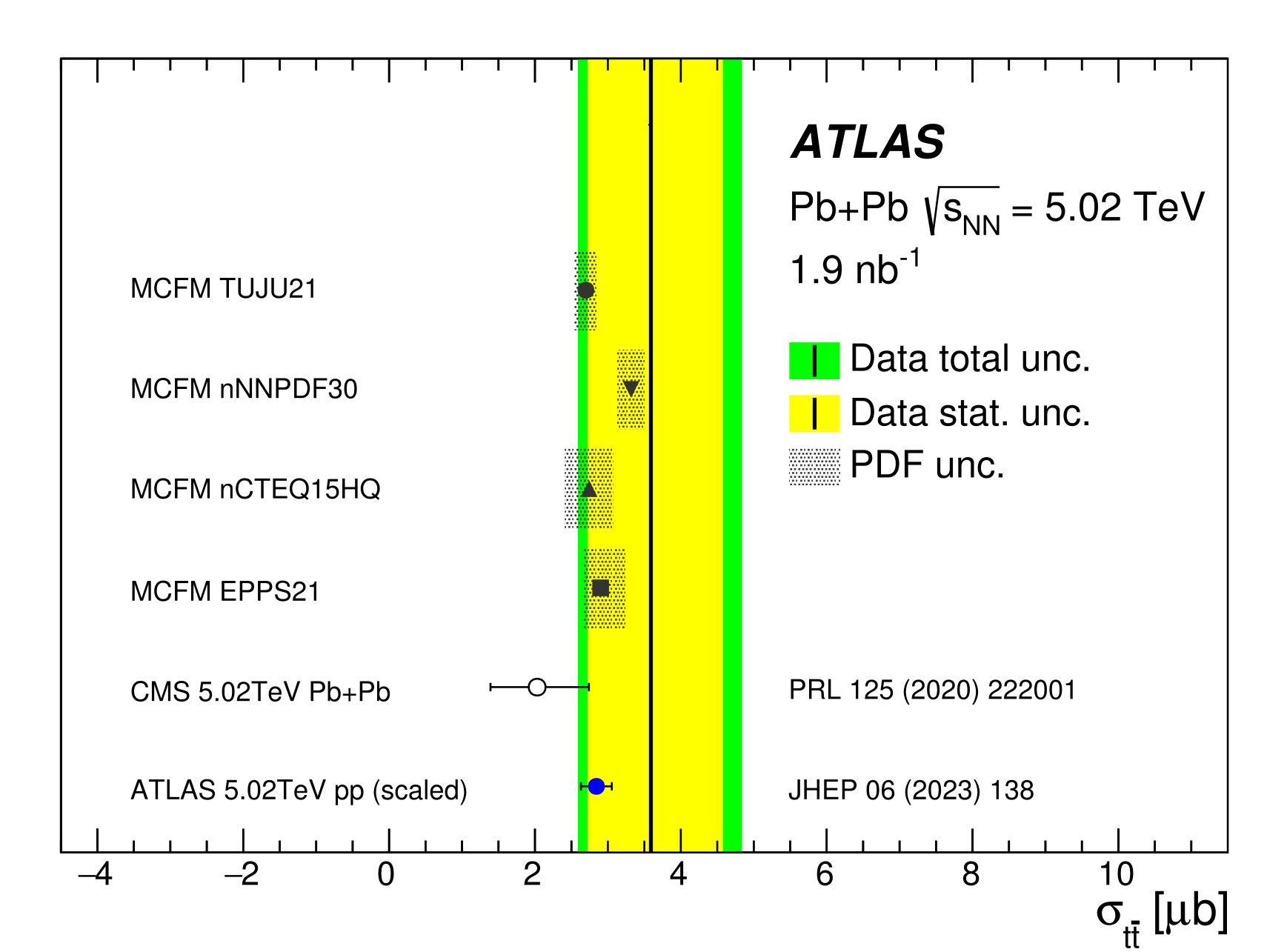
Observation of top‑quark pair production in lead‑lead collisions at $\sqrt{s_{NN}} = 5.02~\text{TeV}$ with the ATLAS detector
Achieved the first-ever observation of top-quark pair production in lead-lead ion collisions, a breakthrough in heavy-ion physics that opens new avenues to study the quark-gluon plasma and the strong force.
Published: 19 November 2024· Journal of High Energy Physics (JHEP)
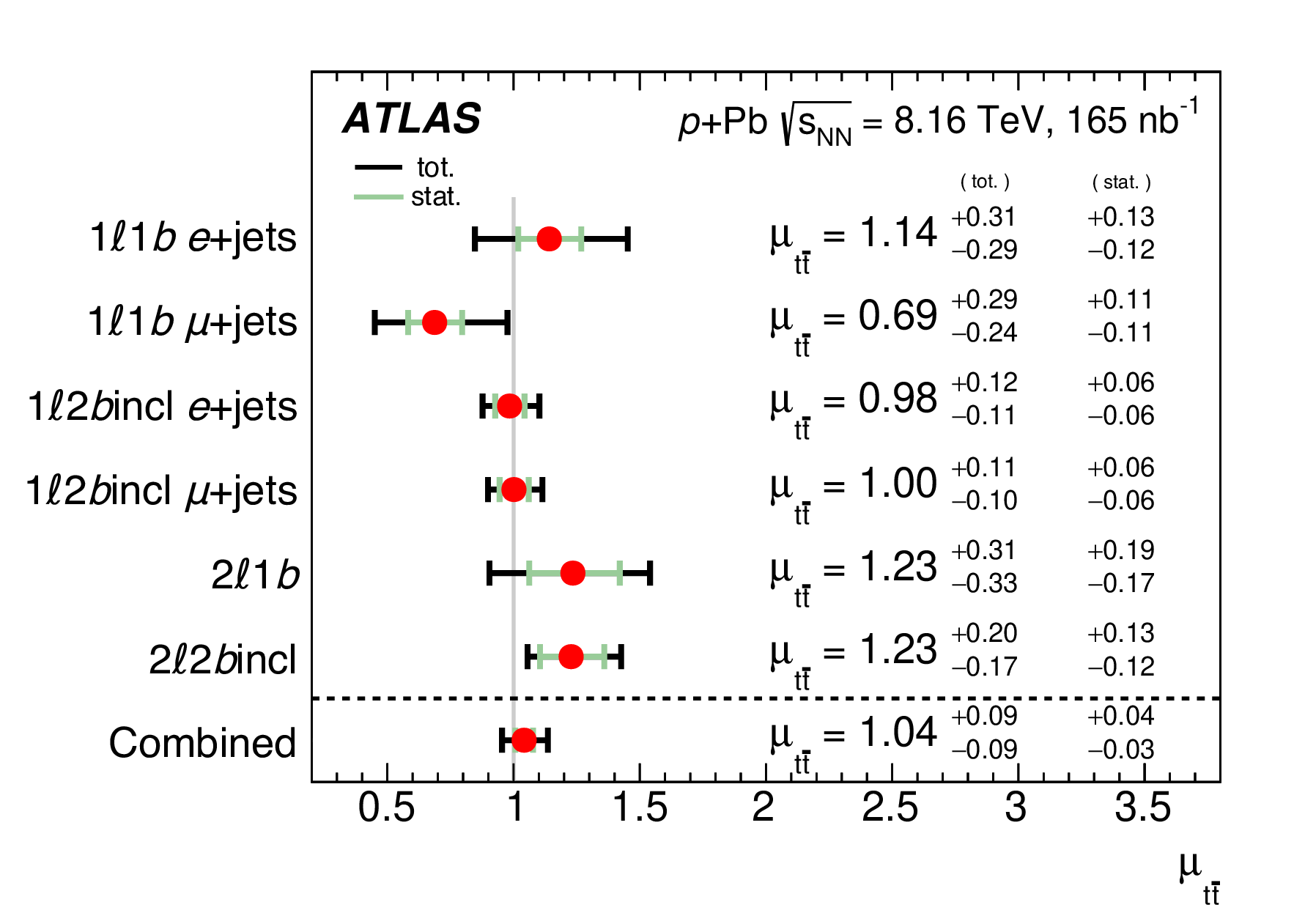
Observation of t̄t production in lepton+jets and dilepton channels in $p+\mathrm{Pb}$ collisions at$\sqrt{s_{NN}} = 8.16~\text{TeV}$ with the ATLAS detector
The top-quark pair production cross-section in proton-lead collisions was measured with a relative uncertainty of 9%, making this the most precise tt̄ cross-section determination in nuclear collisions to date.
Additional Publications
Recent ATLAS results relevant for PDFs at low and high x, saturation in both $pp$ and HI collisions
Acta Physica Polonica B
Observation of top‑quark pair production in $p+\mathrm{Pb}$ collisions in the ATLAS experiment
PoS(ICHEP2024)637
Observation of $t\bar t$ production in lepton+jets and dilepton channels in $p+\mathrm{Pb}$ collisions at $\sqrt{s_{NN}} = 8.16~\text{TeV}$ with the ATLAS detector
ATLAS-CONF-2023-063
Tau-lepton Fake‑Rate determination for the $t\bar tH$ coupling measurement using the ATLAS detector at the LHC
PoS(ICHEP2020)100
Analysis of $t\bar tH$ and $t\bar tW$ production in multilepton final states with the ATLAS detector
ATLAS-CONF-2019-045
CERN School Attended

September 25 ‑ October 8, 2024
European School of High-Energy Physics (ESHEP 2024)Peebles, Scotland, UK

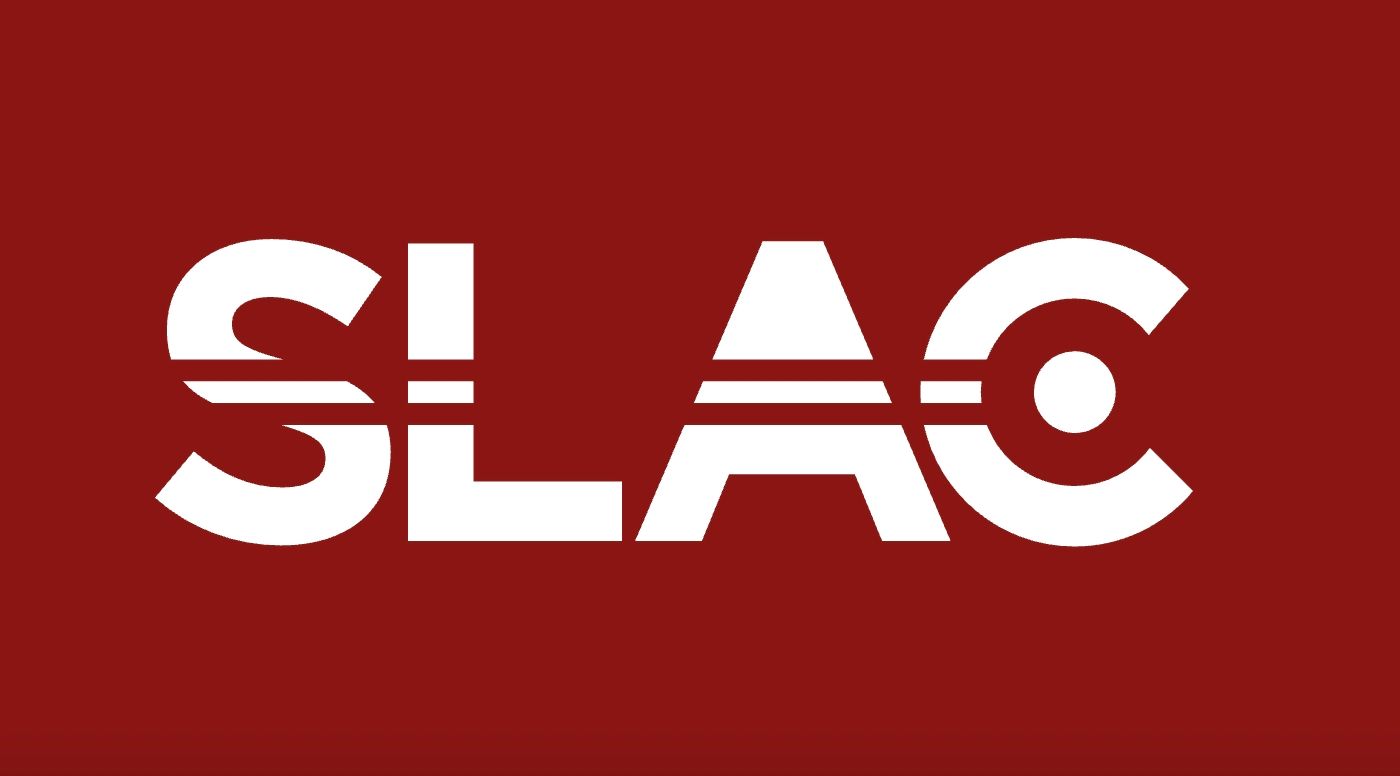

September 9 ‑ September 15, 2018
The 12th Models of Modern Physics Workshop and Summer School in Theoretical PhysicsZuberec, Slovakia
Gallery


